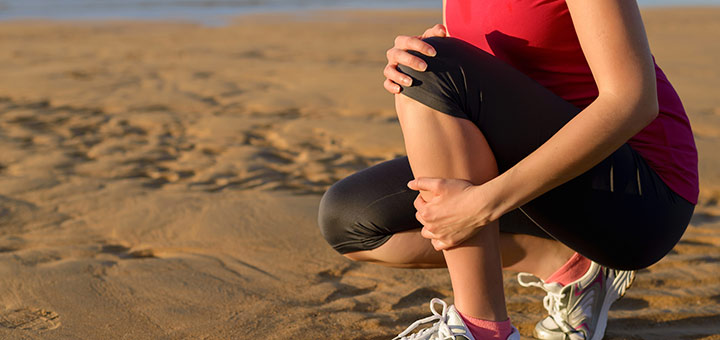Whether you call it runner’s knee, swimmer’s shoulder, golfer’s elbow or tennis elbow, the painful condition of tendonitis is definitely not restricted to sports people. Anyone performing repeated movements (from typing to gardening) may be at risk of developing tendonitis. Repeated overuse or failure to stretch properly before exercise can lead to microscopic tears in the fibres that connect the muscles to the bones in your body. In turn, these tears cause painful inflammation of the tendons and this restricts your movement.
If related to exercise, the pain caused by tendonitis can occur at any time or combination of times: before, during and after exercise or even as ongoing pain during everyday activity.
Tendonitis is commonly experienced in the wrists, elbows, shoulders, knees, shins and ankles. Tendonitis needs accurate diagnosis so it is important to see a professional who can advise on the correct combination of rest and physical manipulation as well as helping you modify factors that increase your risk of injury (eg teaching you how to exercise or perform an activity safely, advising on correct sports equipment, work place ergonomics etc).
Traditional treatments have only tackled the symptoms of tendonitis (ie the inflammation) with painkilling drugs. But if you do not address the underlying cause of the tendonitis the painful symptoms will keep returning. So what exactly is the source of tendonitis?
It is thought that an imbalance in the way that your muscles are used can lead to stress on the tendons which can eventually tear them. To move your limb, you make use of two opposed muscles, one muscle needs to tighten and the other needs to relax. Your nervous system constantly monitors the loads placed on your muscles and if it detects that you are overloading one muscle it sends signals to stop you consciously using that muscle.
When this happens, other muscles work harder and take up the load instead. In turn, this creates an imbalance which alters the way your joints move and puts abnormal stress on the tendons.
So you can see why approaches that only reduce the inflammation with drugs are masking the problem not solving it. Likewise, tackling the pain in the muscles taking up the abnormal stress is merely treating the way your body has adapted to the underlying cause of the pain – not the source of the pain itself. At my clinic we use chiropractic taught techniques to get you out of pain and to locate and treat the source of the pain. We also have a list of recognised rehabilitation providors who work with our clients to stabilise the joint that has been causing the problem by using gentle, targeted exercise.
Avoiding Tendonitis
- Learn and religiously perform stretches before you attempt exercise or any activity that involves repeated movement (eg playing a musical instrument or long hours at the computer keyboard, gardening, DIY etc).
- Seek professional advice on exercises that will safely strengthen muscles and increase your range of motion. (Don’t start an exercise programme whilst the affected area is still inflamed and do seek advice from an expert.)
- Vary your activities. Don’t perform one action continuously for long periods of time. Build breaks into your activity whether it’s getting up from the computer to take a stretch and a walk or varying your exercise routine.
- If you have tendonitis, wearing splints or braces during activities that aggravate it can help. However, I would strongly suggest only using these after advice from a professional as in some circumstances they can make the problem worse, by allowing you to over train an already injured tendon.
- If you regularly play a sport or use the gym, book a session with the local coach or instructor who can assess if your swing or style of exercise is putting you at risk and will be able to correct the way you move. A little time and money spent in avoiding the problem is a great investment.
- Build up your levels of activity slowly. If you are in training for an event or aiming to improve your fitness, only increase your level of activity by ten per cent each week. Sudden increases of activity can place too much stress on your tendons.
- If you experience pain, stop your activity. Pain is a warning signal that something is wrong. Seek professional advice.
- As with many health problems, being overweight places extra pressure on the body so losing any extra pounds will reduce the stress on the tendons in your legs and feet.
- Wear properly fitting, well cushioned shoes, appropriate for the activity you are participating in. If you experience foot pain, seek professional advice.
- Improve your posture and be posture conscious when performing activities. Please see my posture exercises at http://www.spinalcarecentre.co.uk/pages/members/ReliefPhase.html or call my clinic on 01268 752 123 to book in for an assessment.

